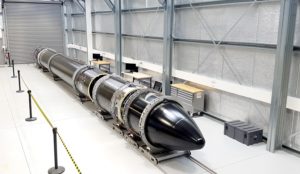
This week, Rocket Lab intends to launch its first rocket in the space. It should start from the Mahia Peninsula on the east coast of New Zealand, a premiere for the country that has never had a space program.
One of the biggest challenges indeed was to find an appropriate launch site hence the Mahia Peninsula. Small companies become therefore the main competitors of national space agencies to go to space more often.The investment funding went up to $ 75 million for a start-up investment of $ 148 million.
“It’s a Test”
With an apt code name “It’s a Test”, the rocket launch window officially starts on Monday, May 22nd for 10 days.Features show the rocket is 17 m high, with 1,2 m diameter and 10 500 kg when it is totally fueled.

For Peter Beck, CEO and founder of Rocket Lab, the country’s weather is so unpredictable that it is unnecessary to have a specific day in mind. “We’re just hoping during the window there’s a good probability of getting the conditions we need to launch. If we don’t, we’ll close the window and open another one at a later date and go again.”

The Rutherford engine
The Rutherford engine can be 3D printed in 24 hours. The main components such as prop valves, injectors, pumps and engine chambers of the engine are all 3D printed. A technique using an electron beam fusion and the engine itself has been used, with the help of an electric motor instead of gas, creating this way a lighter and more efficient machine.With the goal of reaching the moon before 2017, the company also claims that their Rutherford engine “is the first of its kind to use 3D printing for all primary components” which of course reduces the costs and the time production but also the weight. With a payload capacity of 150 kg, the engine is especially created for small satellites. For its customers NASA and Moon Express, Rocket Lab would like to launch other rockets by the end of the year.





